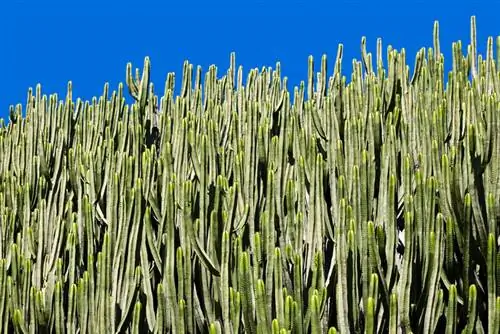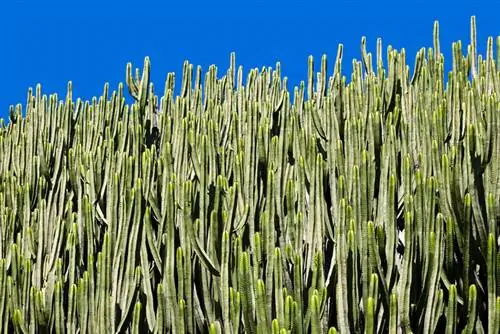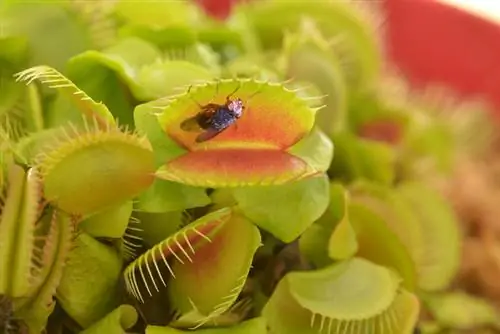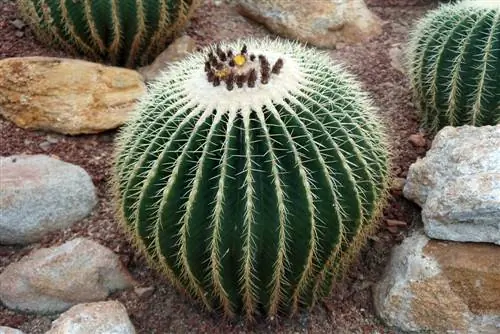- Author admin [email protected].
- Public 2023-12-16 16:46.
- Last modified 2025-01-23 11:19.
Are you looking for a houseplant that is as easy to care for as a cactus and largely avoids the long, painful thorns? Then you will discover a type of plant here that looks very similar to the columnar cactus and is just as easy to care for.

Which cactus-like plant is easy to care for and almost thornless?
A cactus-like plant that is easy to care for and almost thornless is the columnar euphorbia (Euphorbia trigona). It requires a bright location, small amounts of water, occasional fertilization and a cool winter rest.
Columnar neuphorbia competes with cacti
Even experienced hobby gardeners choose a cactus when they first notice a columnar euphorbia. The tightly upright, columnar shoots are triangular in shape and have a diameter of 4 to 6 cm. The fact that the branches are constricted into segments contributes to the striking resemblance to a cactus. There are also oval leaves and tiny, 5 mm short thorns on the edges.
Where the cactus-like plant feels comfortable, it reaches a size of 100 to 120 cm in indoor cultivation over the years. Only in rare cases do small, creamy white flowers appear between the leaves along the edges. The variety Euphorbia trigona 'Rubra' offers a little more color in appearance with purple-violet leaves and red-brown thorns.
Tips on location and care
Anyone who is familiar with the care of cacti will not find any differences in the requirements of a triangular spurge. We have summarized for you what you should pay attention to when choosing the location and the water and nutrient supply:
- Bright to sunny location by the window with a south, southwest or southeast orientation
- Likes to be warm, at temperatures between 18 and 25 degrees Celsius
- Watere regularly during the growing season when the substrate is well dried
- Fertilize liquidly every 2 to 3 weeks from March to October
From May to August/September, the columnar euphorbia likes to join your cacti on the balcony to benefit from the sunlight. The majestic spurge should only be protected from direct sunlight at midday so that it does not suffer from sunburn. An 8-day hardening phase in a partially shaded location is also advantageous.
Tip
When it comes to winter rest, cacti and columnar euphorbias pull together. Both types of plants want to spend the cold season in a bright, cool location at 10 to 12 degrees Celsius. From November to February they are only watered little by little and not fertilized.






